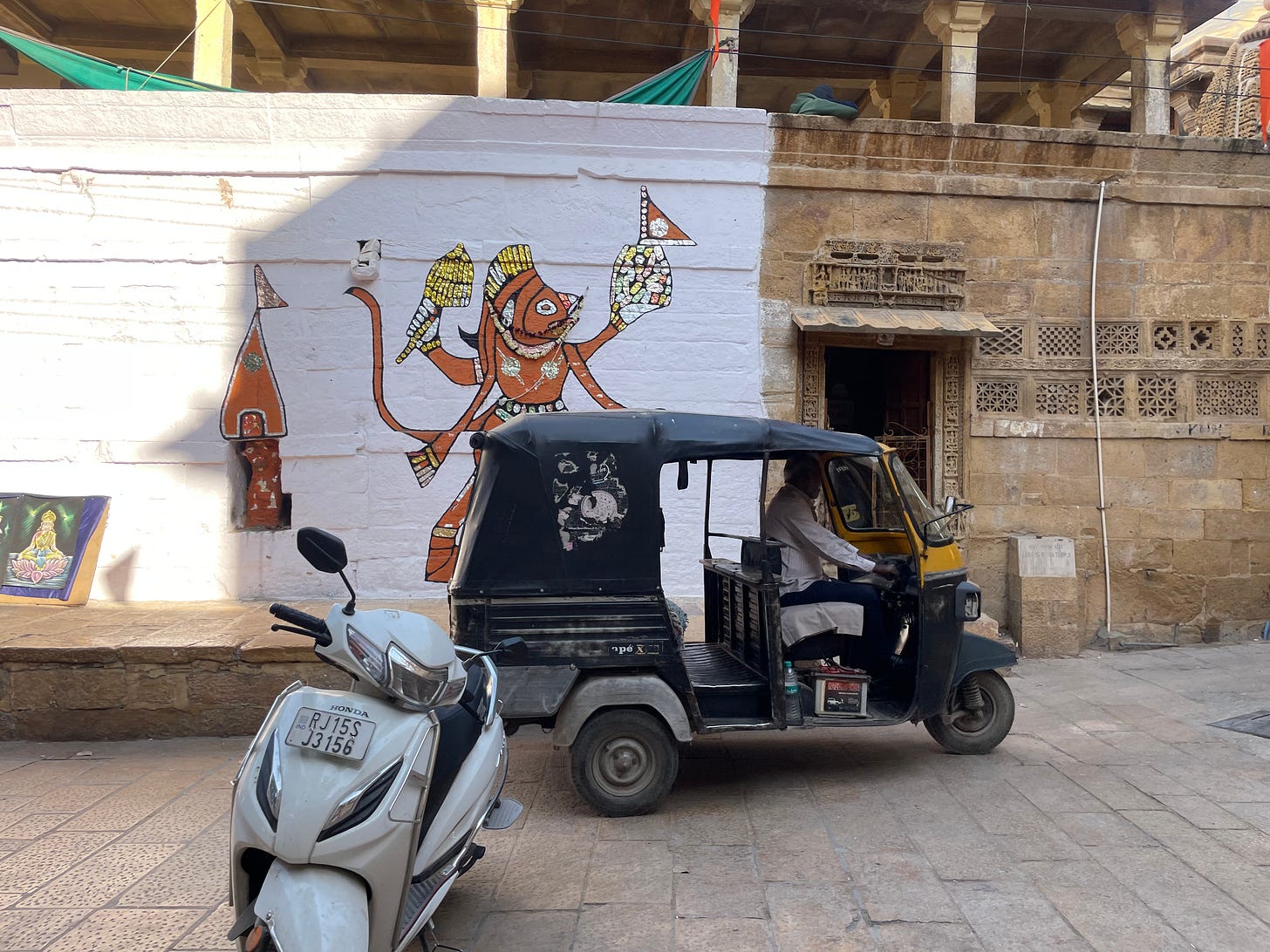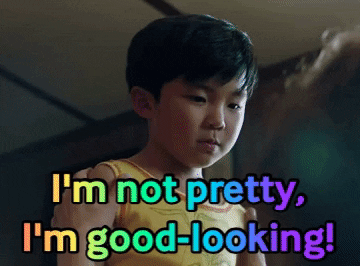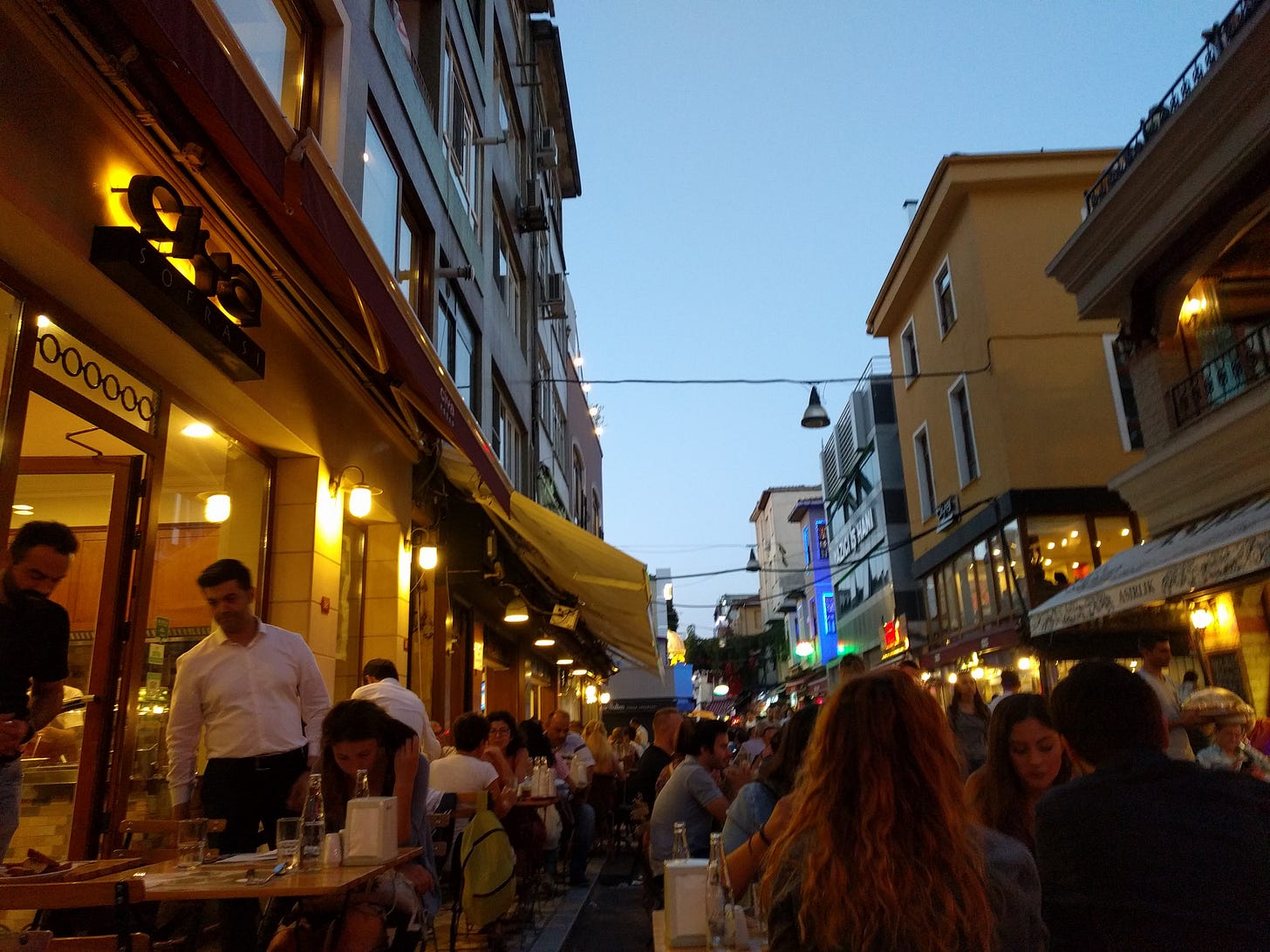On the Power and Peril of Labels
People are people, and art is art — until they're reduced to something else.
The power of labels to shape our perceptions of people, countries and cultures has strongly snagged my attention the past decade or so. This post isn’t strictly about the internet, but as the internet weaves itself ever-more into our daily lives — and weaves the world ever-closer together — it seems this topic will be ever-more pertinent in our culture and conversations, so here we are.
Also, some personal news: I was recently accepted to the Lighthouse Book Project, so will be working on a book alongside these newsletters (and hopefully incorporating parts of them into it). So that’s exciting 🥳! My mentor in the project will be the great Vauhini Vara, and I’m excited to learn from her.
I recently came across an essay of Vara’s, “Jhumpa Lahiri and Me,” that touches on this precise notion of labels and culture, and it’s a nice starting point here. Much of the essay centers on Vara’s experience as an Indian-American finding her writerly voice, as she says, “in the shadow” of Jhumpa Lahiri. Lahiri won the Pulitzer in fiction the year Vara graduated high school, and set in motion within her the idea — at least for a time – she should be writing about the same very “Indian” things Lahiri wrote about.
Writing about, as she says, “arranged marriage, saris, rickshaws and chai.”
But then Vara began discovering other authors, many of whom came from very different backgrounds than her own:
“George Saunders, Joy Williams, Lorrie Moore, Denis Johnson. These authors wrote weird, darkly funny stories that resonated with me. Lahiri, with her restrained chronicles of the Bengali Brahmin bourgeoisie, started to seem limited by contrast. While some of her depiction of Indian American life reflected my experience, I was becoming more aware of what didn’t.
That wasn’t my only reservation. I noticed that critics and friends seemed to judge Saunders, Williams, Moore and Johnson for their prose alone, while knowing little, if anything, about their backgrounds. With Lahiri, her ethnicity seemed always at the forefront. On NPR, an interviewer described a sad Indian woman in one of her stories, then asked Lahiri, “Is that your mom?” Everything I read about her seemed to be about her background — the Indianness of it all — rather than her writing.”
These other authors were judged “for their prose alone.” And for writing, art — things that make us feel — shouldn’t this be the primary, and maybe only, basis for judgment?

In his brilliant book Between the World and Me (it’s short and beautiful and I can’t recommend it enough), Ta-Nehisi Coates writes that “Race is the child of racism, not the father.” It’s only relatively recently that even Irish Americans began to be considered “white” in America, after all.
Some of what Coates is saying, I think, is how humans and societies tend to name things, to categorize them. And then to charge those names and categories with meaning — to use them to build and enforce hierarchies and power. And while this instinct may not always be ill-intended, it can certainly cause harm.
Coates recalls attending college at Howard University and immersing himself in Black and African literature, history and art. He began to recognize that:
“Serious history was the West, and the West was white. This was all distilled for me in a quote I once read from the novelist Saul Bellow. I can't remember where I read it, or when — only that I was already at Howard. "Who is the Tolstoy of the Zulus?" Bellow quipped. Tolstoy was "white," and so Tolstoy "mattered," like everything else that was white ‘mattered’….
What was required was a new story, a new history told through the lens of our struggle. I had always known this, had heard the need for a new history… the primordial stuff of our own Dream — the Dream of a ‘black race’ — of our own Tolstoys who lived deep in the African past, where we authored operas, pioneered secret algebra, erected ornate walls, pyramids, colossi, bridges, roads, and all the inventions that I then thought must qualify one's lineage for the ranks of civilization.”
But this search led Coates to a very different realization. Perhaps to be “black” isn’t only to be attached to a race, a lineage, a history — but rather an empty box with a loud, dark label on it. A status symbol of the very worst kind.
He continues:
“Perhaps the Irish too had once lost their bodies. Perhaps being named "black" had nothing to do with any of this; perhaps being named "black" was just someone's name for being at the bottom, a human turned to object, object turned to pariah….
It must have been around this time that I discovered an essay by Ralph Wiley in which he responded to Bellow's quip. "Tolstoy is the Tolstoy of the Zulus," wrote Wiley. "Unless you find a profit in fencing off universal properties of mankind into exclusive tribal ownership." And there it was. I had accepted Bellow's premise….
My great error was not that I had accepted someone else's dream but that I had accepted the fact of dreams, the need for escape, and the invention of racecraft.”
These passages struck me — I’ve underlined them to hell in my book copy. This may seem strange for me, a white guy who grew up in the Denver suburbs.
But what I take Coates as saying here is that art, literature, beauty — feeling — transcend race, culture, nation, and whatever other labels get applied to the people who make and consume them. Coates can enjoy Tolstoy’s writing as much, or more, than me — and I can pore over, and underline, and envy the words of Coates, a black man with a very different experience of America than my own.
I think what I especially loved upon reading Coates’ words is that they felt like a sort of validation of a hunch I’d long had. Something I love most about travel is discovering the infinite similarities in people and places, wherever I go. There’s great joy in making someone laugh, or smile, or perhaps even grimace in a culture far removed from your own. It’s remarkable how easy this is — and remarkable to reflect that they’re almost always the same actions or words that might make someone back home laugh, smile, or grimace too.
Your intuitions are substantiated. You realize the world isn’t all that hard.
When I moved to Turkey after college, we were told the “a-okay” sign, where you touch your pointer finger to your thumb and fan out the other three, was very verboten. The gesture meant something like “asshole,” and we should do our utmost to avoid flashing it.
The problem for me was that I frequently made this sign, out of habit. I would sometimes flash it to a Turkish stranger, then double over in panic, fumble a quick shift to an awkward thumbs-up. But I’d smile sheepishly as I did, and the recipient of my a-okay/asshole sign would smile and understand what I was going for, too.
And so reading those passages of Coates’ felt like affirmation that this wasn’t just my own hunch, my own experience. I don’t mean, of course, to diminish the very real experiences of Coates and other black Americans who’ve endured horrific disparagement in America since its inception.
But what I find noteworthy — dare I even say hopeful? — in his writing is the idea that deep down, none of us are really very far from each other. We laugh at the same jokes, and find the same things beautiful. Quite often it’s the labeling — the categorization, the en-boxification — of people and places that gets us into trouble.
These labels can lead to questions about Tolstoy’s value across racial and cultural boundaries, but also to darker problems.
This will get heavy, but I promise to lighten up again toward the end.
It’s widely recognized that the increased distinction between Hutus and Tutsis in Rwanda under Belgian rule helped contribute to the 1994 genocide there. According to the University of Minnesota’s Center for Holocaust and Genocide Studies,
“While it is known that these ethnic identities preceded colonization, these identities, which were quite fluid in practice, became rigidified and racialized under Belgian colonial rule through the use of ID cards.”
There were even stories of Hutu-Tutsi marriage prior to Belgian colonization. And it turns out this was common in Iraq prior to the US invasion in 2003, too.
It may feel like ages ago given the past decade’s PERPETUALLY URGENT NEWS, but Iraq saw notorious rampant sectarian violence between the Sunnis and Shi’a following the US invasion.
Often this is framed as a divide as ancient as the Muslim religion itself, but it’s not. Years ago an excellent episode of This American Life explored the stark, sudden and often heartbreaking ways in which these religious labels grew quite menacing. And Fanar Haddad, a research fellow at the National University of Singapore's Middle East Institute, told Vox, “there barely existed a sense of Sunni identity before 2003. It simply didn't exist in Iraq.”
He continues:
“The roots of sectarian conflict aren't that deep in Iraq. In early medieval Baghdad, there were sectarian clashes, but that is extremely different from what you have in the age of the nation state….
Post-2003 Iraq, I'd say identity politics have been the norm rather than an anomaly because they're part of the system by design. The first institution that was set up in 2003 under the auspices of the occupation was the Iraq Governing Council — which was explicitly based on sectarian apportionment.”
None of this is to say that Rwanda’s genocide and Iraq’s sectarian violence are solely the downstream effects of identities applied and rigidified within their societies. But we should at least acknowledge their power. The ways in which labels, in remarkably short order, can utterly transform how we view the people around us.

It strikes me that all this is perhaps important to remember in our current American moment. It may be useful to categorize and essentialize people into different groups in our brains, but it can lead to terrible outcomes.
And the one- and two-dimensional caricatures we may encounter on television and social media don’t help. If anything, they only accelerate this essentialization. One need not even read a single Tweet to understand where some users stand on political issues today, to either accept or reject them into our folds, our tribes. Watermelon emoji or Israeli flag? An emoji face with a mask on it — a Ukrainian flag — an American flag. How much more “essential” can it get? No one can see you laugh or smile or grimace on the internet, not really.
Now let’s come back to Tolstoy and Jhumpa Lahiri, Ta-Nehisi Coates and Vauhini Vara. While the rigid slotting of culture into precise racial, cultural boxes may not necessarily cause mass violence, it can nevertheless serve to deprive art of its full potential. Categorizing a book only as “a pivotal read about the Black experience in America” or “the Indian immigrant experience in America” can distract from the idea that the same book might also just be really fucking great.
I thought about this when I saw “Minari,” a film released in 2020 to broad critical acclaim. The film was said to be good — but was almost always discussed in the same breath as “Parasite", released the year prior. Both were Korean or Korean-American movies, and lauded as achievements for Asian representation in American cinema.
I expect to receive a lot of flack for this, but I’ll be honest and say I didn’t love “Parasite.” I haven’t seen it in a while so I won’t drone on as to why, but I just remember thinking the movie was… fine. Not bad, but not particularly Oscar-worthy either, in my opinion. To me, it felt overhyped.
And so I began to watch “Minari” expecting to be similarly underwhelmed. But I wasn’t! I adored the film — it was one of my favorite things I’d seen in a long time, both heartbreaking and heartwarming, poetic and gorgeous and rich with meaning.

And this kind of pissed me off, being honest. Why in the world, I thought, had I been led to think “Minari” would be anything like “Parasite”?
Media coverage — our own, American, cultural milieu discussion of the two films — consistently lumped them together, and it’s incredibly clear these lumpings have almost zero relevance to the content of the actual films themselves.
See this review of “Minari” for instance, which discusses it alongside “Parasite” even as the author remarks on the vast gulf of differences between the two:
“On the surface there are few points of comparison between the two features. Parasite was a scabrous black comedy of social inequality set in contemporary Seoul, in which the poor and the wealthy vied with each other for the greatest display of amorality. Minari is an understated, domestic drama about a Korean migrant family that moves from California to Arkansas in search of a better life.”
“On the surface,” yes — but also deep down, and on the sides, and in-between! In just about every conceivable way, in fact, except the language and skin tone of the actors. As another review points out, the comparison of the two films:
“...begs the question: can “Minari” only be as successful as its Asian American predecessors? Or another way to look at this is to perhaps ask, “Why wasn’t ‘Minari’ compared to A24’s most recent success ‘Uncut Gems?’”
Why, indeed? If some guy from Colorado produced a smash-hit caustic parody, and then I came out a year later with a sensitive, heartwarming drama, and everyone lumped our films together as “those breakthrough Colorado guys!” I’d probably be salty about it, myself.

Despite the heavy themes here, I find a lot of hope in the idea of finding beauty and meaning in art across racial and cultural boundaries, far above and beyond the “representation” they bring to a genre of writing, film, music or otherwise.
Not to say that representation itself doesn’t have value. Years ago, I visited Nigeria, Kenya and Rwanda on a work trip shortly after the film “Black Panther” was released in much of Africa. And across all those countries — thousands of miles apart, across much of the continent, speaking different languages even — I saw young Africans greet each other with the film’s “Wakanda Salute.” It’s hard to argue representation doesn’t mean anything in the world when faced with that kind of evidence.
But it does a disservice to essentialize art into only “representation” — to label it as such, to reduce it to mere cultural token.
And it does a disservice to ourselves. Tolstoy is the Tolstoy of the Zulus — and Coates and Lahiri and Vara, the Coates and Lahiri and Vara of all the rest of us, too. I, for one, am grateful I can enjoy these things, and feel them deep in my bones.
Song of the Week: serpentwithfeet — You Don’t Own Me / Canopy







This really resonates, I'll be sharing with friends and colleagues. And congrats on moving forward with The Book Project at Lighthouse - I'll eagerly await the results!